Education-focused researchers explore the most effective ways of teaching science.Credit: Getty
As a doctoral student at the University of Washington in Seattle, biologist Michelle Smith spent a lot of time sorting fruit flies under the microscope. But she often found her mind wandering to her teaching activities: assisting with undergraduate laboratory and writing courses, and instructing schoolchildren in physics and biology.
“I felt this real draw towards teaching, but I also liked research,” she recalls. She felt lost, until 2007, when she took up a postdoctoral position in education research with Carl Wieman, a Nobel-prizewinning physicist with a deep interest in science education, then at the University of Colorado Boulder. She’d found her dream position: using her research skills to investigate how peer discussions help undergraduates to learn basic genetics concepts. She published her results in Science1.
When she started her postdoc, Smith recalls, there weren’t many faculty positions available for education-focused researchers in biology departments. That’s changing, and she is now a tenured professor at Cornell University in Ithaca, New York, researching learning in ecology field courses, and senior associate dean for undergraduate education.
Stop describing academic teaching as a ‘load’
Tenure-track faculty members with expertise in education research are starting to pop up in science departments at leading research universities — although this remains the path less taken. Their presence, position and prestige also varies widely by nation, institution and field of study2.
“There has been a growth in these types of position, both for tenure-track and long-term contract faculty members,” says Emily Miller, deputy vice-president for institutional policy at the Association of American Universities in Washington DC.
Precise data on the trend are scarce, but researchers from around the world point to the United States as a leader. The US National Science Foundation funds extensive research into science pedagogy, much of it through its Directorate for STEM Education, which doles out US$5 million to postdoctoral fellowships in science, technology, engineering and mathematics (STEM) education. There has also been a modest rise in a handful of other nations, including Canada and Australia, but they tend to have less money to support such studies, says Kimberly Tanner, a biologist at San Francisco State University in California, who focuses on biology-education research and co-edits the journal CBE—Life Sciences Education. The field has gained stature from the participation and support of big-name scientists such as Wieman and Tanner’s mentor Bruce Alberts. Alberts is a biochemist at the University of California, San Francisco, past president of the US National Academy of Sciences and author of the prominent textbook The Molecular Biology of the Cell.
Researcher Michelle Smith, who studies learning in ecology field courses at Cornell University in Ithaca, New York, guides students in an activity that models evolutionary principles.Credit: Cornell University
Faculty members in this speciality might largely teach, or they could maintain a strong research programme that focuses on education. “Within this field, you can think about the balance that you want, and you can have options,” says Smith.
Some researchers, such as Wieman, transitioned into education research after becoming established in their initial discipline. As the number of positions grows, early-career researchers will be able to enter education-focused positions directly. Faculty members who focus on education not only support their own students, but also help their colleagues to adopt the latest, science-based teaching methods, which in turn improves universities’ reputations with applicants.
Sideways steps
The discipline of physics has a long history of engaging with education research, says Wieman. His interest in education was sparked after starting his atomic-physics lab several decades ago, when he noticed that some graduate students who excelled at physics courses in the classroom were not as successful when they embarked on research in the lab. They were book smart, but lacked the problem-solving skills to debug scientific equipment or interpret experimental results. “There was just this fundamental puzzle,” he says. “Why were these things so disconnected?” So, for the next 15 years or so, he led parallel research programmes in atomic physics and physics education.
Better teachers are needed to improve science education
The atomic-physics programme earned him a Nobel Prize in Physics in 2001, and that also gave him a “bigger soapbox to stand on” to advocate for improvements in education. In 2007, he moved to the University of British Columbia in Vancouver, Canada, where he set up a Can$11-million (US$8-million) initiative to transform undergraduate science education with evidence-based methods, while managing a similar initiative in Colorado.
Wieman says that, rather than relying solely on lectures, teachers should facilitate “learning to think in a different way, and there’s real expertise in how to guide people to do that”. Many education experts promote active-learning techniques, such as getting students to work together to solve problems. More than 100 courses at the University of British Columbia were altered as a result of Wieman’s initiative3.
Wieman now has a joint appointment in the physics department and at the Graduate School of Education at Stanford University in California. Today, his research focuses exclusively on education, and specifically on undergraduate education of ‘technical expertise’ in physics, engineering and medicine.
Biology is another field with a history of education research, but it has taken time for many departments to prioritize educational innovation. In 1999, when evolutionary ecologist Raoul Mulder was interviewed for his first faculty job, a standard teaching and research position at the University of Melbourne in Australia, he recalls being asked only one question about lecturing.
As Mulder’s studies of bird ecology progressed, he, too, became intrigued by educational methods. “I think teaching is an absolutely natural outlet for this curiosity we all have as researchers,” says Mulder.
He began to turn the tools of science on education. He describes his initial education research, which began in the early 2000s, as “kind of a side hustle, I suppose. I wasn’t sure whether it was an accepted part of my identity”.
One of these side interests was student assessment. He noticed that students often didn’t pick up their final papers after grading. His careful feedback came too late to help them to improve their grades. So he experimented with a system wherein students received feedback from each other ahead of final submissions. Not only were the final papers improved, but students often couldn’t tell the difference between comments from their peers and their teachers4.
As these side projects continued, Mulder accumulated education-focused grants adding up to nearly Aus$1 million (US$675,000). Although his education studies account for only about 10% of his papers, they fuel more than 20% of his citations and make up nearly half of his top-ten most-impactful citations. “What was a side hustle has actually become more important than I thought,” Mulder says.
Improve undergraduate science education
It also marked him as someone interested in education studies, and in 2021 resulted in him taking on a leadership role at the Melbourne Centre for the Study of Higher Education, which focuses on evidence-based practices for higher education and professional development. Part of Mulder’s job includes handing out grants for others to do education research.
Those interested in the science of science education can start with questions inspired by their own classrooms, Mulder says, then dig into the “rich and growing” literature. He also suggests striking up conversations with other faculty members, who might be open to collaborating on studies of their own teaching practices.
But young researchers on a standard faculty track would be wise to speak with their department chair before focusing too much attention on education, says Neil Haave, a biologist at the University of Alberta in Camrose, Canada. “If they don’t see scholarship of teaching and learning as being research, that might not get you to full professor,” he warns.
Education-focused from the start
Another option is to enter an education-focused position directly as a new faculty member, as did Natasha Holmes, a physics-education researcher at Cornell who studies the efficacy of laboratory courses. “There are more and more graduate students coming up the pipeline now,” says Holmes, another Wieman protégé.
During her graduate studies at the University of British Columbia, Holmes assisted a postdoctoral fellow with an education research project, and was inspired to switch her PhD thesis to physics-education research. “It just tapped into my passions and curiosities,” Holmes recalls.
Researcher Natasha Holmes studies the efficacy of physics laboratory courses.Credit: Serge Petchenyi/Cornell University Center for Teaching Innovation
She focused on what she calls “a really extreme form of active learning”, when students invent solutions to problems before being taught the standard methods. It results in “much richer and deeper understanding”, Holmes says.
Tanner’s path, by contrast, started in the biology lab. She earned a PhD in neuroscience at the University of California, San Francisco, in 1997. She then did a postdoc in education research, studying partnerships between scientists and school classrooms. Tanner, who started her professor post at San Francisco State University in 2004, is particularly interested in how teachers and scientists can work together to make classroom biology more like actual biology research.
As her career has advanced, so has the community of researchers who share her passion. At a meeting of the Society for the Advancement of Biology Education Research last July, she saw her former postdocs and graduate students who now have teams of their own.
There are many journals, professional organizations and conferences at which people can start learning about education research (see ‘Resources for science-education researchers’). Social media is beneficial, too, says Manuel João Costa, deputy rector for student affairs and innovations in teaching and learning at the University of Minho in Braga, Portugal. He advises following the social-media accounts of teaching and learning centres, which often post content of interest.
“It’s important to get some professional qualification in this space,” advises Susan Rowland, deputy executive dean for the faculty of science at the University of Queensland in Brisbane, Australia. She gained a graduate certificate in teaching in 2007 as she pivoted towards an education-focused career, and says it helped her to become the first teaching-focused faculty member in the biochemistry department, in 2009. Teaching-specific training also schools researchers in the vocabulary that educators and education scholars use when they communicate and publish their work.
Being the first teaching-focused researcher in her department also meant that Rowland had to work out how to angle for tenure. To prove her worth, she says, it was crucial to operate in the ‘currency’ that other faculty members valued: papers, grants and visible public impact.
Eager educators should also be aware, Rowland adds, that by taking a teaching-focused position, they could be closing the door on a more conventional research-based career.
Seeking status
Perceptions of education and teaching vary, and Tanner has found that many academic deans in California exhibit some bias against education-focused researchers — although they appreciate the grant money these faculty members bring in5. Tanner recalls that numerous people told her that her career path was a waste of her neuroscience training. She says she was “pretty great” at neuroscience research, and that there is no reason to think that other education-minded scientists failed at the bench, either. She has obtained grants, awards and success by following her passions.
In fact, both students and faculty members benefit when education-focused academics are embedded in science departments. These specialists understand their science discipline better than do scholars who trained in education only, and they can serve as formal or informal resources for colleagues who want to improve in the classroom.
“We drive curriculum renewal and best practice in the classroom and online,” says Terry Mulhern, a biomedical-science educator at the University of Melbourne. “We innovate and improve, and in doing so we bring our [department] colleagues with us.” For example, in 2019, he and a colleague revamped their university’s introductory biochemistry course using individualized feedback to students, lessons based on common misconceptions and several online elements. The latter proved useful when the institution had to pivot to full online learning in 2020 as a result of COVID-19 lockdowns.
Manuel João Costa teaches biochemistry to medicine students at the University of Minho in Braga, Portugal.Credit: Rui Oliveira
Changing colleagues’ attitudes towards education can take time, as Rowland knows well. When she was first hired to change the culture of teaching in the University of Queensland’s School of Chemistry and Molecular Biosciences, her first move was to choose the undesirable office next to the men’s toilets. Most of the department’s faculty were men, and she knew they’d all have to walk past her door eventually. That’s when she’d call out a cheery “Hi!”
After a while, colleagues started coming in, sitting in her comfortable chairs and talking about their students. Then they’d ask her questions — “You’ve published in PNAS? And in Nature journals? And you’re teaching-focused?” Yes, yes and yes, she’d respond.
Eventually, Rowland says, she earned her peers’ respect. Faculty members would come to her with teaching ideas, and she would help them to choose new approaches to try in their classrooms. “My presence legitimized the idea that they could talk about their courses as works in progress,” she says. The biochemistry department now has 6 teaching-focused academics amid a faculty of 70.
Ban the lecture
At Cornell, Holmes says that she isn’t formally expected to help her peers in the physics department to improve their teaching, but she serves as a resource just like any other faculty member with specific expertise. She knows cutting-edge teaching techniques she can implement and share with colleagues. For example, peer instruction is a technique in which lecture students answer a multiple-choice question, confer with their classmates, then answer it again, usually with improved understanding. The method often spreads between faculty members by word of mouth6.
Holmes also brings a fresh perspective to education research, using techniques such as machine learning. For example, a graduate student in her group applied theoretical statistical physics to model the messy data on student behaviours in physics lab courses. Using this technique, the researchers uncovered a gender divide in enquiry-based lab projects, with men more likely to use equipment and women more likely to analyse data7.
All this effort in improving education eventually feeds the research enterprise, says Rui Oliveira, a biochemist and education researcher at the University of Minho. Well-taught undergraduates become capable graduate students and postdocs with critical-thinking skills — just what Wieman was after when he started investigating teaching 35 years ago.
“In the long run,” says Oliveira, “you will get better scientists to work with, and do better science.”


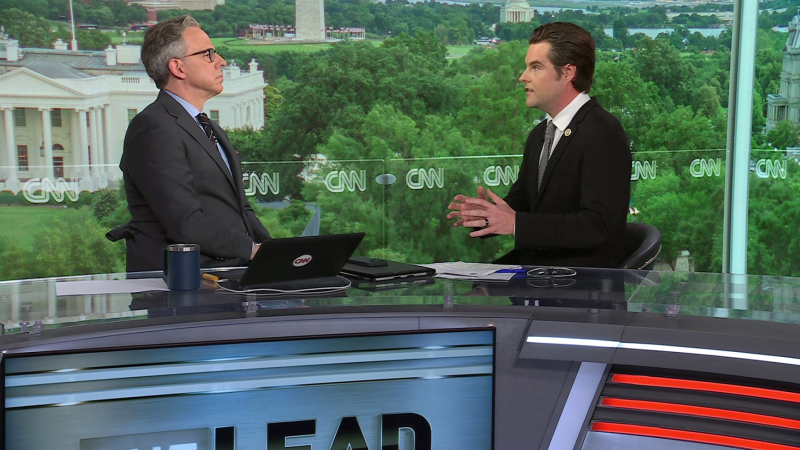






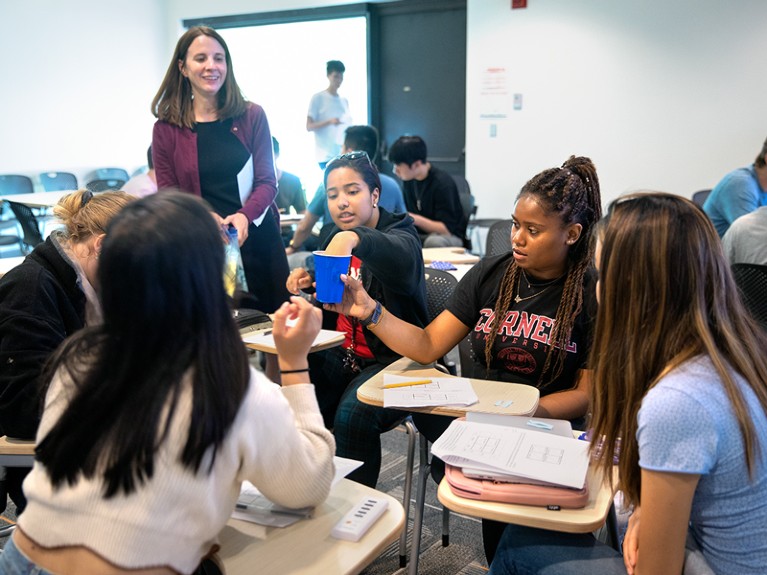
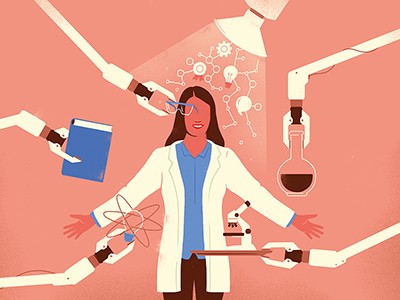
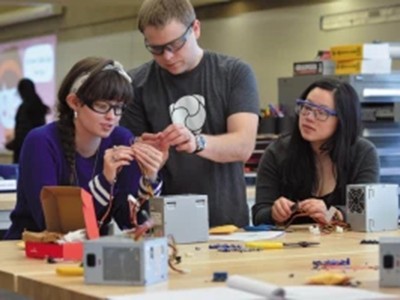
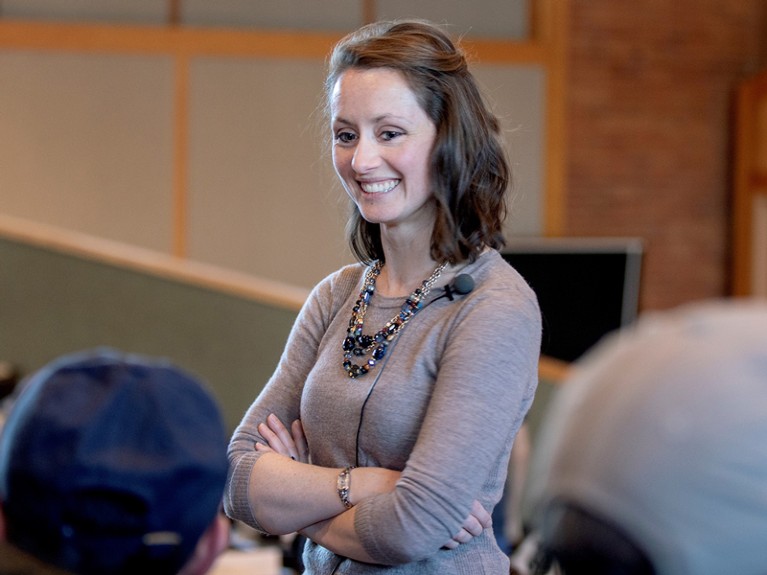

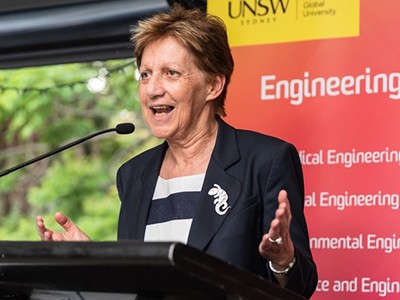
More News
Editorial Expression of Concern: Leptin stimulates fatty-acid oxidation by activating AMP-activated protein kinase – Nature
Quantum control of a cat qubit with bit-flip times exceeding ten seconds – Nature
Venus water loss is dominated by HCO+ dissociative recombination – Nature